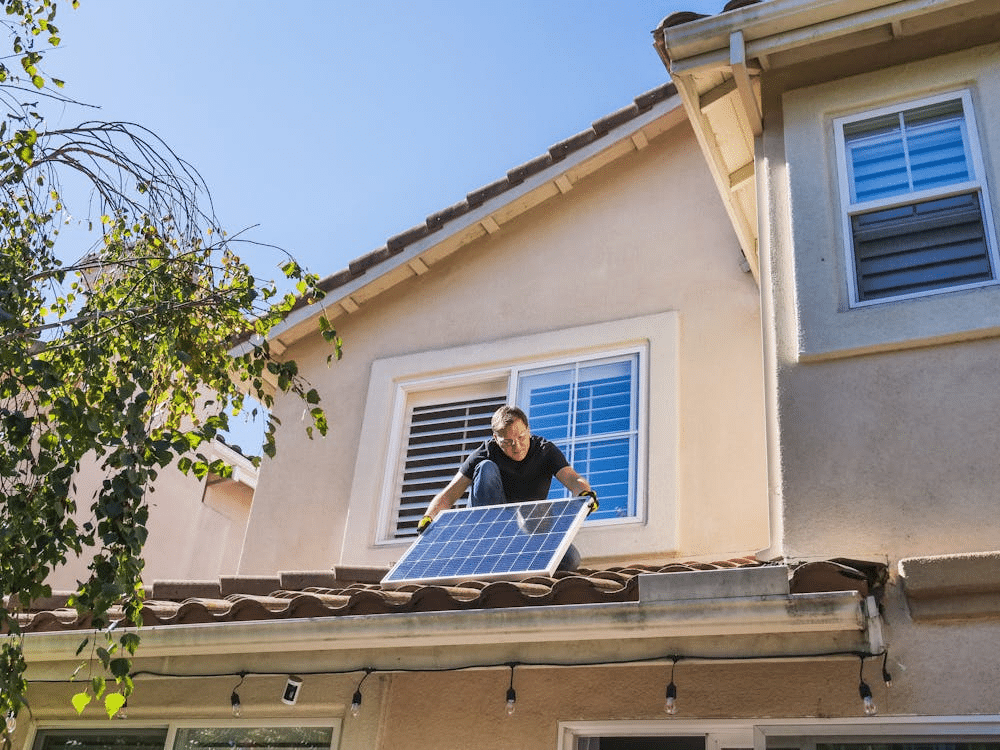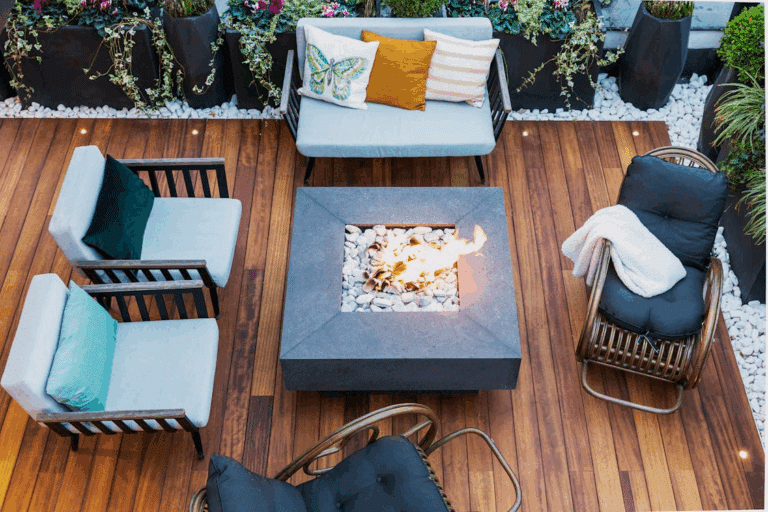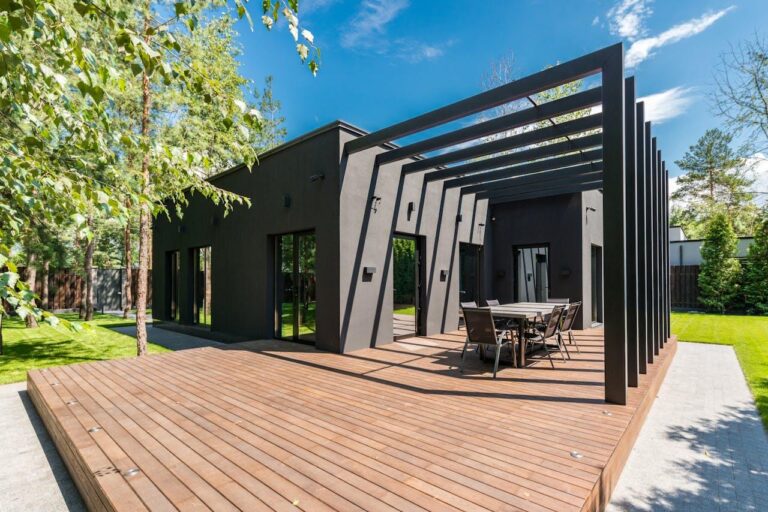When the summer rolls around, it’s the perfect time to make some upgrades to your home. If you’re worried about how much your AC bill is going up or how much water you’re using for the garden, you might feel inclined to aim green with your changes, too. Here, we’re going to look at some of the upgrades you can invest in that make the biggest difference, especially when the sun is out, and why you should consider making them now.
Upgrade To Efficient AC
Your air conditioning system is likely going to be seeing a lot more use this summer, so it’s only natural that switching it out for a newer, more efficient model can have a big impact on your comfort as well as your energy bills. Efficient AC systems, like those with high SEER ratings and ENERGY STAR certifications, use a lot less energy to cool your home. You should ensure professional installation and correct sizing to maximize performance and minimize waste. Properly sealing and insulating ducts also prevents cool air from escaping, improving efficiency. A smart thermostat can further reduce energy usage by adjusting temperatures based on your habits and profiles you set for different times of the day.
Improve Your Insulation And Sealing
A lot of people think of insulation primarily in the context of how it can help your home in the winter, helping you keep the heat in. However, effective insulation is also vital for keeping your home cooler in the summer, as well, decreasing your reliance on your AC. Attics, walls, floors, and crawlspaces should be insulated to modern energy standards. Sealing leaks around windows, doors, and ducts prevents warm air from entering and cool air from escaping. Weatherstripping and caulking are low-cost yet highly effective measures. You can even look into eco-friendly insulation materials like recycled denim or cellulose made from newspapers to make the change as green as possible.
Let Light Be LED
The world is steadily making the switch to LED lights. Incandescent bulbs were banned a couple of years ago in most places, but you might still have a few in your home. Similarly, CFL bulbs haven’t been banned but are steadily being phased out as the public is catching on to not just the energy efficiency of LED lights, but how much cleaner and brighter the light they provide is, as well. Although switching a few bulbs might seem like a small thing, it’s a surprisingly high-impact change, cutting down 80% of the energy costs spent on lighting. What’s more, they produce less heat, which helps keep indoor spaces cooler in summer, reducing AC demand.

Make The Switch To Solar
There are few changes that have an effect quite as profound as making the switch to a renewable form of energy, and what better time is there to harness the power of the sun than in the summer? Installing rooftop solar panels allows you to generate clean, renewable energy, drastically reducing your reliance on fossil fuels. Summer is ideal for installation due to extended daylight hours. While the upfront cost can be significant, tax incentives, rebates, and net metering can make solar an economical long-term investment. With the right solar for home installation, you can enjoy renewable energy for up to 30 years, reducing or even eliminating your energy bill throughout the day. With solar battery storage, you can even keep the surplus energy you generate during the day to keep powering the home at night.
Control Your Water With Low-Flow Fixtures
Energy use isn’t the only concern in the summer, of course. We all tend to use a lot more water, especially to take care of our gardens, but droughts are more likely than ever. As such, you can take steps to reduce your water consumption by, for instance, installing low-flow showerheads, faucets, and dual-flush toilets. Modern low-flow fixtures can save up to 50% of the water you use inside the home, and are relatively inexpensive and easy to install, meaning you can start enjoying savings on your water bills before too long. Using less hot water also reduces the energy needed to heat it, offering a secondary environmental benefit. Pair these fixtures with water-saving habits like shorter showers and turning off the tap while brushing teeth
Go Smart With Your Home
If you want to be more efficient and effective with your energy use, then one device that can make that a lot easier is a smart home hub. When connected with smart thermostats, lighting systems, and energy monitors, you can learn your habits and adjust the home accordingly, such as optimizing your cooling schedule to avoid wasted energy. What’s more, smart plugs and power strips help reduce phantom loads from electronics left on standby. Integration with voice assistants or smartphone apps allows remote control of lighting, cooling, and appliances. These technologies not only enhance convenience but also support a greener lifestyle by reducing unnecessary energy use.

Start Composting Your Food Waste
You might not think of the food you throw out as anything but wasteful, but it can be legitimately harmful to the environment, as well. Food waste in landfills generates methane, a potent greenhouse gas. Composting at home is a simple way to reduce this impact and enrich your garden. During summer, compost breaks down faster due to the heat, making it an ideal time to start. Use a backyard compost bin or a countertop composting system for kitchen scraps. It’s important not to add meat, dairy, or oily foods, as they can make composting bins an inevitable targets of pests. Rather, you want to mix vegetable scraps, coffee grounds, leaves, and even paper waste like cardboard, which creates a balanced compost that can help you make your soil in the garden considerably more nutrient-rich.
Create A Garden To Beat The Heat
We’ve already looked at how water usage can skyrocket in the summer, but a lot of that is down to your garden. Thirsty lawns and planets might look nice and green when you water them, but you can be much more eco-friendly by xeriscaping instead. This method uses low-water plants, such as native, drought-resistant plants, to conserve water while also supporting local biodiversity. You can improve its performance by incorporating mulch to retain soil moisture and prevent weeds. Drip irrigation systems deliver water directly to roots, maximizing efficiency. Choose plants adapted to your region’s climate to minimize maintenance and watering needs. This change not only saves water but also cuts down on the energy used to treat and deliver municipal water.
Use Eco-Friendly Paint And Sealants
Whether you’re looking to brighten up your interiors to make them better suited to the increased natural light of summer, or you’re painting and resealing your outdoor furniture, you should make sure that you choose products that do as little harm as possible to the environment. In this case, you want to choose paints and sealants with low or no VOCs (volatile organic compounds.) Aside from releasing carbon emissions, VOCs worsen the air quality of your home and can even cause or exacerbate respiratory issues like asthma. You should also opt for products that are water-based and labeled “Green Seal” or “Greenguard Certified.” These choices protect both human health and the environment, making your home improvement projects cleaner, safer, and more sustainable.
Upgrade To Energy-Efficient Appliances
It’s not just your AC that might be due for an upgrade. The summer heat means that your indoor appliances, such as your fridge, dishwasher, or washer/dryer, might be working harder than usual and are more likely to need a replacement. When they do, you should keep an eye out for ENERGY STAR-certified models to replace them. These appliances use significantly less energy and water than standard models without sacrificing performance. For example, an ENERGY STAR refrigerator can use up to 40% less energy than conventional units. A lot of modern appliances also feature eco-modes and smart sensors that help them use less energy based on how they are used.
Go Natural With Lighting And Ventilation
In the summer, you can be much more strategic with your natural light and airflow so that you don’t have to rely on appliances anywhere near as much to keep your home comfortable. For instance, you can reduce your reliance on AC by opening the windows early each morning and in the evening when the air is cooler to let it circulate naturally throughout the home. You can also use natural light, using light-colored window treatments and reflective surfaces to brighten rooms without electricity. Install skylights or solar tubes in darker areas to bring in natural light. These simple adjustments reduce energy usage while increasing indoor comfort. By working with nature instead of against it, you make your home more sustainable.
The benefits of green living go well beyond simply feeling better about your impact on the environment; they can have practical implications, as well, such as reducing your energy bill and improving the comfort and quality of life in your home. Think about which of the examples above you could benefit from the most.

















